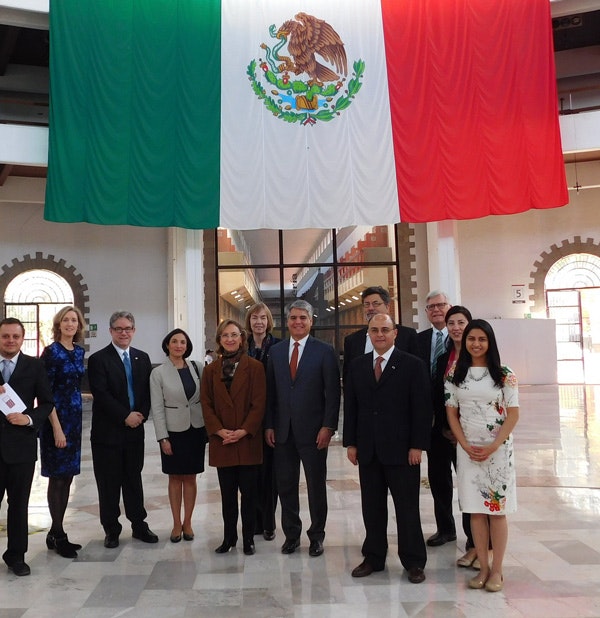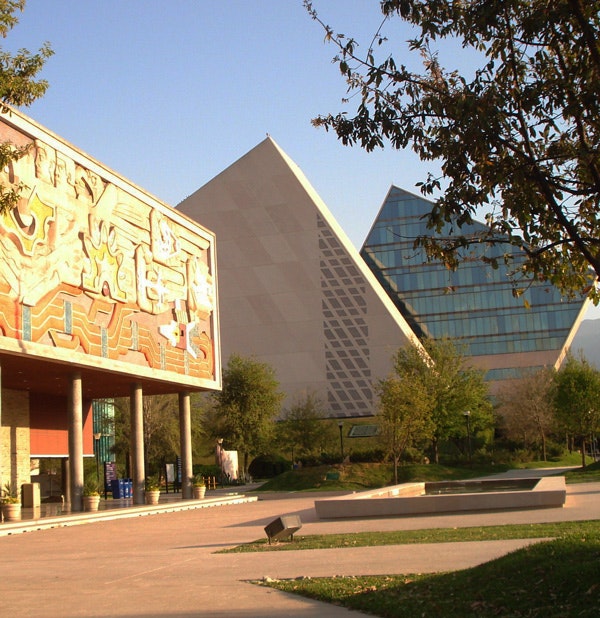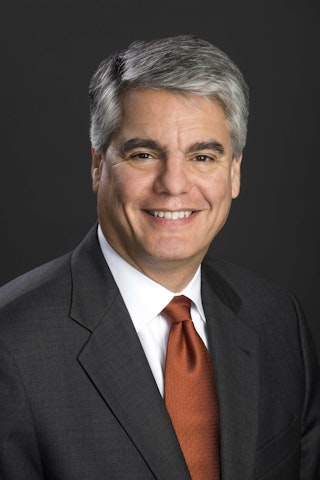Unifying North America through Education
The Catalyst asked two higher education leaders — Margaret Spellings of the University of North Carolina System and Gregory Fenves of the University of Texas at Austin — to discuss the role of education in maximizing the potential of the three nations of North America.

Margaret Spellings and Gregory Fenves are both university leaders with ties to Texas and a unique perspective on education. Spellings, a product of Houston public schools who later became Secretary of Education during the George W. Bush Administration and then President of the George W. Bush Presidential Center, has recently taken over the post of President of the University of North Carolina System. Fenves, President of the University of Texas at Austin, is at the heart of border convergence within higher education. As part of that role, he met in January with university leaders in Mexico. Both agree: education is at the heart of a stronger North America.
Conversation with Margaret Spellings, President of the University of North Carolina System
Conversation with Gregory Fenves, President of the University of Texas at Austin
We hear a lot about the importance of a knowledge society but how do we create one across North America so that students in the U.S., Canada, and Mexico can compete with the world?
Education is the key. That is how we are going to compete with the world.
That answer has a number of elements to it. Our focus at UT-Austin is on higher education and research as a very important component of competing in a post-industrial, knowledge-based economy. There are a lot of resonances with universities around the world, including in North America.
We were just in Mexico in January with a delegation of over 40 people, visiting universities with which we’ve long had collaborations. With a number of universities, there are common elements across North America.
 Gregory Fenves (center) and University of Texas officials meet with higher education leaders in Mexico. (Photo courtesy the University of Texas)
Gregory Fenves (center) and University of Texas officials meet with higher education leaders in Mexico. (Photo courtesy the University of Texas)
What are those commonalities?
First, there is an understanding that important problems take place in a societal context. There are a lot of contextual and inner relationships that are important to understand.
This becomes particularly true when you are talking about things that affect multiple countries. It could be social issues, poverty, or income inequality. It could be issues that have to do with water or energy. It could be issues that have to do with economic growth and development or transportation. Those all have commonalities and interactions across the border. We all recognize that, and this is part of what we are doing in our curriculum and our degree programs at the University of Texas.
Important problems take place in a societal context. … It could be social issues, poverty, or income inequality. It could be issues that have to do with water or energy. It could be issues that have to do with economic growth and development or transportation. Those all have commonalities and interactions across the border.
The second commonality is an entrepreneurial mindset. Our universities are and should be places where new ideas are explored and evaluated. We try them out and are not encumbered by the way things have been done in the past, whether those are intellectual or business pursuits or understanding societal issues.
Monterrey Tech, in particular, is doing this. In some ways, they are doing this better than we are. We had some very good discussions with Monterrey Tech leaders about engineering, science, business, and medicine.
 Monterrey Institute of Technology and Higher Education (Creative Commons Monterrey)
Monterrey Institute of Technology and Higher Education (Creative Commons Monterrey)
What examples of innovation are taking place between the U.S. and Mexico?
The energy area in Mexico is one. There is a huge interest in bringing new ideas and technologies to explore and develop Mexico’s oil and gas resources.
Health care is another example. Our new Dell Medical School is looking at how you use health IT to understand the health of a community, to understand what types of diseases exist.
Different communities and different populations have different problems with disease. Using information technology to understand them allows you to both diagnose them better and use therapy more closely. When we were in Mexico, there were discussions of what we’re doing here and what some of the medical schools are doing there.
What are some of the challenges to universities working more collaboratively across borders?
There are always challenges in how you do that, and they often come down to funding. How do we support these efforts? And are the incentives to support research aligned in the right way?
That’s the biggest challenge, whether collaboration is across the border or within the state of Texas or across the country. That was part of the discussion we had in Mexico.
The second challenge is removing barriers that can make it difficult to collaborate. For example, how do we approve research agreements and handle intellectual property? Some issues are very practical and some are bureaucratic challenges that can inhibit collaboration.
What is happening on both sides of the border to exchange students?
We have 100 students from UT studying in Mexico and almost 400 students from Mexico studying at UT. We have pretty significant exchange programs. I don’t think we’ll get every student studying internationally, but it’s an important part of an education.
My goal for our graduates is that they become leaders in business or in the community and whatever they decide to pursue. No matter what roles they’re going to have after graduation, understanding the international situation is going to be very important. Living in another country is a really important component of that education. Learning in a different environment from a different university, a different language, is very important.
We think students who study at UT also benefit from seeing the U.S. and the Texas perspective. They see the way we teach and the way we do research here at UT.
My goal for our graduates is that they become leaders in business or in the community and whatever they decide to pursue. No matter what roles they’re going to have after graduation, understanding the international situation is going to be very important.
 Artist rendering of the Dell Medical Center at the University of Texas. (University of Texas)
Artist rendering of the Dell Medical Center at the University of Texas. (University of Texas)
Demographic shifts in the U.S. are related to North American demographics. In Texas, for example, more than half of public school students are from Hispanic families. What do U.S. universities need to do to increase the graduation rate of young, Hispanic students? Their economic and social mobility will shape the future of states like Texas and California.
That is definitely true and we’re working very hard on that. Hispanic students represent more than 20 percent of our freshmen admission for next year. If you track the trend over 10 years, it’s gone up substantially, from 15 percent in 2006 to 22 percent in 2016.
A lot of that is due to the demographics of the state, but we have also been proactive in outreach and admissions to talented students of all backgrounds. That includes Hispanic students.
The other important element is having them graduate. UT has significantly, and I’d say dramatically, increased our retention of students since the 1980s and 1990s. We’ve also narrowed the gaps across socio-economic categories, whether they are related to race or ethnic categories.
At the same time, we have narrowed the freshmen retention gap between white and minority students, including Hispanic freshmen. There still are differences, but there are significantly fewer differences than 10 years ago.
What has worked?
We look at all students that come here. Students who sometimes have predictors of not persisting are those who are first in their family to go to college. They may also come from a high school that may not have prepared them as well. We look at a number of factors.
All students get involved in affinity groups so we’re not selecting students out and identifying them in any way particularly. They’re all expected to be a part of the affinity groups, but the affinity groups for the students that we know statistically don’t graduate as much are really focused on success at the University of Texas. They work on study skills and mentoring and have gotten national attention.
The Catalyst believes that ideas matter. We aim to stimulate debate on the most important issues of the day, featuring a range of arguments that are constructive, high-minded, and share our core values of freedom, opportunity, accountability, and compassion. To that end, we seek out ideas that may challenge us, and the authors’ views presented here are their own; The Catalyst does not endorse any particular policy, politician, or party.


